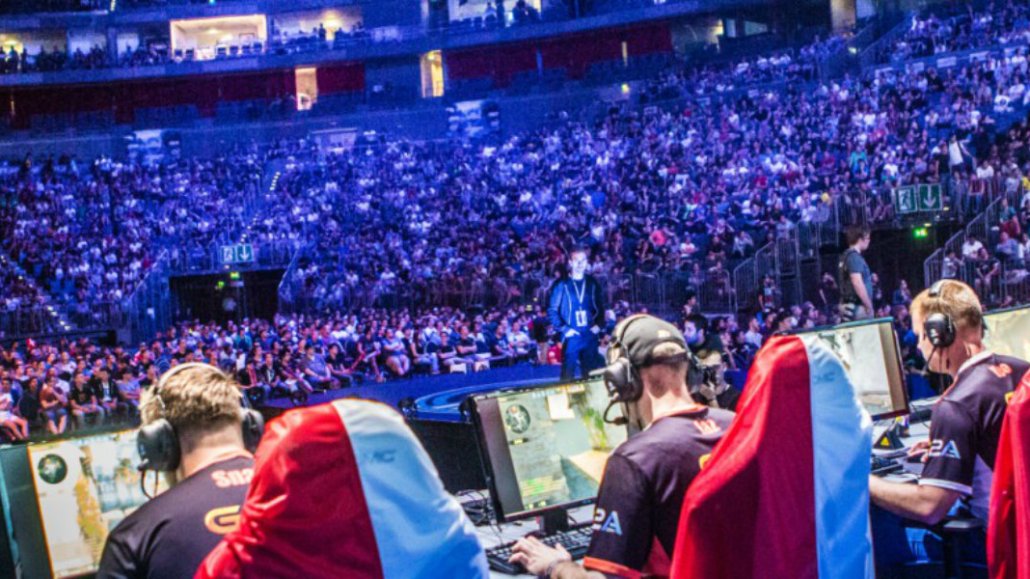‘It’s still niche’: Esports see audience surge, more tepid ad demand

Viewership of esports may be booming right now, but the drastically slowed ad market has made capitalizing on that audience difficult.
Twitch racked up 1.1 billion hours watched last month, the largest amount of views in the gaming platform’s nine-year history. Even esports upstarts have enjoyed bumper audiences in the absence of live sports. Formula One’s debut esports virtual Grand Prix attracted 3.2 million online viewers, which peaked at around 359,000 concurrent streams across YouTube, Twitch and Facebook when it ran two weeks ago.
Usually, audience shifts like these are like catnip for advertisers. The coronavirus, however, has thrown up an unusual set of issues for advertisers.
Media budgets are in constant flux and the money advertisers do spend tends to be on tried and tested areas like search over emerging ones like esports. And even though advertisers like Chipotle, Subaru, Chupa Chups have followed viewers from live sports to esports during the pandemic, they’ve taken a light-touch approach.
“While esports is more mainstream than it ever has been, it’s still a big niche at this point for many of our clients,” said Adam Schwartz, svp of video investments for sports at Horizon Media.
Financing prize money for tournaments, providing products for free giveaways and funding the streams themselves are among the low-risk high reward tactics advertisers are currently brokering with teams and leagues. This way advertisers support the creation of content in a way that’s less likely to be viewed as a cynical marketing stunt by viewers versus being more exposed at the center of an esports sponsorship.
“The conversations we’re having with marketers now are more focused around how we can help accelerate the awareness of their brands’ values instead of trying to help them hit a harder [key] metric,” said Glen Calvert, chief operating officer at esports entertainment business Fnatic. And while these conversations differ by advertiser, Calvert said they’re all motivated by wider corporate shifts away from sales-driven promotions toward a more helpful tone.
Fnatic’s commercial strategy has pivoted accordingly. Normally, Fnatic’s commercial deals are built on how the reach of its content converts into a media value for the business. “It’s a different conversation we’re talking about whether the tone of the content is going to be suitable for the fans and if it is then as long as the costs are being covered for doing the entertainment bit then that’s all we care about.”
But for every marketer having those conversations with the likes of Fnatic, there are others that are reluctant to do the same until they know when live sports will return.
“Most of the advertisers we’re working with are taking their dollars and parking it to the side while they wait for the leagues to provide some sort of direction on when live sports will return before they make any decisions on how to spend that money,” said Michael Neuman, evp and managing partner at Scout Sports & Entertainment, a division of Horizon Media
Broadcasters may be pivotal in answering some of the lingering questions advertisers still have over the reach of esports. With advertisers looking to do more with fewer media dollars, esports programming could be a worthwhile bet as CPMs can vary anywhere from $10 to $30 for that sort of content.
Turner Sports and ESPN are among a handful of broadcasters that have bought the television rights to show content from games like FIFA, but there are many others that haven’t done as much. The coronavirus, however, has put a hole through media schedules and sent broadcasters like Fox Sports scrambling to plug those gaps with esports. But it takes time to monetize the audience with new sponsorships and partnerships, especially when it comes to non-endemic brands who are being forced to branch outside their norm media mix. Turner, which partnered with Twitch to launch an esports take on the irreverent variety show in January, is banking on its investments in culture and lifestyle content in addition to the pure esports gameplay to pull advertisers into esports while it has their attention.
“In the short timeframe since the pandemic started any advertiser that hasn’t decided to go dark is looking at these sorts of live experiences as areas of interest,” said Seth Ladetsky, svp of client partnerships and head of Turner Sports Digital and eSports sales and strategy at WarnerMedia.
“Categories like consumer goods, beverages, delivery services and insurance are gravitating toward media channels that are new, cool and growing.”
Despite the scramble from sports networks for esports, they’re not pitching the new content hard to media buyers. In the case of Fox Sports, the sports network worked with existing advertisers to place them in those races to either make up for past unfilled inventory or help offset future losses, said Schwartz.
More in Media

Meta AI rolls out several enhancements across apps and websites with its newest Llama 3
Meta AI, which first debuted in September, also got a number of updates including ways to search for real-time information through integrations with Google and Bing.

Walmart rolls out a self-serve, supplier-driven insights connector
The retail giant paired its insights unit Luminate with Walmart Connect to help suppliers optimize for customer consumption, just in time for the holidays, explained the company’s CRO Seth Dallaire.

Research Briefing: BuzzFeed pivots business to AI media and tech as publishers increase use of AI
In this week’s Digiday+ Research Briefing, we examine BuzzFeed’s plans to pivot the business to an AI-driven tech and media company, how marketers’ use of X and ad spending has dropped dramatically, and how agency executives are fed up with Meta’s ad platform bugs and overcharges, as seen in recent data from Digiday+ Research.





